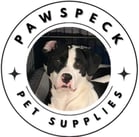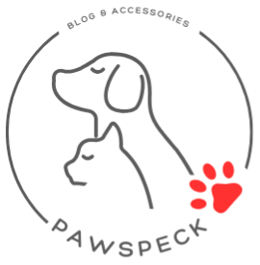Effective ways to get rid of fleas on your dog
Fleas can turn your dog’s life—and your home—into an itchy nightmare, but with the right approach, you can banish these pesky parasites for good!
1/12/20254 min read



In this guide, we’ll explore the most effective ways to get rid of fleas on your dog, from prevention tips to tried-and-true treatments, so your pup can get back to enjoying a happy, itch-free life.
1. Identify the Problem
Before you can treat fleas, you need to confirm that they are indeed the cause of your dog’s discomfort. Signs of fleas include:
Constant scratching, biting, or licking: Fleas cause intense itching, irritation, and often makes the skin appear red.
Visible fleas: Fleas are small, dark brown or black insects. In most cases you might notice them scurrying through your dog’s fur, especially around the neck, tail, and stomach area.
Flea dirt: Flea feces, or "flea dirt," looks like small black specks and can often be seen in your dog’s fur or bedding. If you see black specks, place a damp paper towel on them. If it turns red, it’s flea dirt (which contains digested blood).
Hair Loss: If the scratching continues, dogs may start to lose hair around their tails.
2. Use a Flea Comb
A flea comb is an inexpensive and effective tool to help remove fleas from your dog’s coat. Here's how to use it:
Comb through your dog’s fur: Focus on areas where fleas are more likely to hide, such as the neck, behind the ears, around the tail, and under the belly.
Dispose of fleas immediately: After each pass, wipe the comb on a damp paper towel or cloth to remove any fleas and flea dirt.
Repeat daily: Fleas are persistent, so combing your dog once or twice a day will help you catch them early.
3. Bathe Your Dog
A flea bath can help kill adult fleas and soothe your dog’s irritated skin. Follow these steps:
Choose a flea shampoo: Select a gentle flea shampoo designed for dogs. Avoid using human shampoos, as they can be too harsh for your pet's skin.
Wet your dog’s fur thoroughly: Use lukewarm water to wet your dog’s coat.
Lather and rinse: Apply the flea shampoo and lather it into your dog’s fur. Make sure to pay attention to areas where fleas are likely to hide, such as the neck, underarms, and tail. Let the shampoo sit for a few minutes to ensure it kills the fleas.
Rinse well: Make sure to rinse thoroughly to remove all shampoo.
Dry your dog: After the bath, dry your dog with a towel and make sure they stay warm until their fur is dry.
4. Apply a Flea Treatment
There are several flea treatments available, including topical treatments, oral medications, and flea collars. The best option will depend on your dog’s size, age, and overall health. Here's a breakdown of common treatments:
Topical Treatments: These are applied to the back of the neck and typically last for a month. They kill fleas on contact and prevent further infestations.
Oral Medications: These pills are usually given monthly and kill fleas when ingested. Some oral medications also prevent flea eggs from hatching.
Flea Collars: Flea collars release chemicals that repel fleas and can last for several months. Be cautious of any collar you choose to ensure it is safe for your dog.
Sprays and Powders: These can be sprayed directly onto your dog’s coat. They may offer short-term relief but might need to be reapplied frequently.
**Always consult with your vet before choosing a flea treatment to ensure it’s safe and appropriate for your dog.
5. Clean Your Home
Fleas don’t just live on your dog; they also infest your home. It's essential to treat your environment to prevent reinfestation. Here’s how to tackle your living space:
Vacuum regularly: Fleas and their eggs can hide in carpets, rugs, and upholstery. Vacuum all areas your dog frequents, including furniture, floors, and bedding. Be sure to empty the vacuum immediately to avoid re-infestation.
Wash your dog’s bedding: Wash your dog’s bedding, toys, and any fabric they frequently come into contact with. Use hot water to kill fleas and their eggs.
Treat your home: Consider using a flea spray or fogger designed for the home. These products kill fleas, eggs, and larvae in your living space. Be sure to follow the instructions carefully and keep your dog and family away from treated areas.
6. Treat Your Yard
If your dog spends time outside, your yard might also be a source of fleas. Here’s how to make your outdoor space less inviting to fleas:
Mow the lawn: Keep the grass short to reduce hiding places for fleas and other pests.
Trim shrubs and bushes: Fleas love to hide in tall grass and dense shrubs, so trimming them will reduce flea habitats.
Use flea treatments for yards: There are outdoor flea sprays and granules that you can apply to your yard. These can help kill fleas and prevent future infestations.
7. Prevent Future Flea Infestations
Flea prevention is key to ensuring your dog stays comfortable and flea-free. Here are some tips for preventing fleas from coming back:
Use a monthly flea prevention product: Regular use of flea preventatives (topical treatments, oral medications, or flea collars) can help keep fleas off your dog.
Check your dog regularly: Even if you’re using preventatives, it’s a good idea to check your dog for fleas regularly, especially after they’ve been outside.
Maintain a clean environment: Vacuum and wash your dog’s bedding frequently. Keeping your home clean will make it harder for fleas to thrive.
Final Thoughts
Flea infestations can be frustrating, but with a combination of the right treatments for your dog, diligent cleaning, and consistent preventative care, you can eliminate the problem. It’s important to act quickly—fleas multiply rapidly, and a small problem can become a big one if left untreated.
If you’re unsure about which flea treatment is best for your dog, or if your dog has severe flea allergies or other health concerns, be sure to consult your veterinarian for personalized advice. By staying proactive and consistent, you’ll keep your dog flea-free and happy!
Disclaimer: This blog is for informational purposes only and should not be considered veterinary or professional advice. Always consult your veterinarian for health-related questions or concerns about your dog’s specific needs before traveling. Please read our Disclaimer page for further information.
Amazon Affiliate Disclaimer: As an Amazon Associate, I earn from qualifying purchases. This means that if you click on one of the affiliate links in this article and make a purchase, I may earn a small commission at no additional cost to you. Thank you for supporting this blog and helping me continue to provide valuable content for dog lovers!
PawSpeck
Your go-to source for pet lovers' advice.
Contact:
© 2024. All rights reserved.


